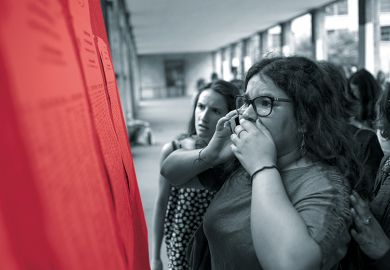Recent news coverage paints an alarming picture of the higher education scene in Japan.
According to reports, “many” social sciences and humanities faculties are set to close at the behest of Japan’s government following a letter from the minister of education. It has variously been referred to as an “order”, a “decree”, a “directive” and a “request”.
The reality is that not one of the universities in question is currently contemplating such closures.
The article linked to above refers only to social science and humanities faculties, but the main target of reform is the 10 national teacher training universities, for reasons to do with demographic change, academic standards and perceived societal needs. Social science and humanities faculties are also decreasing their student intake, and some will see lower levels of staffing.
The coverage also misrepresents the relationship between the government and universities. Japanese ministers of education do not have unchecked power to shut down entire faculties by decree from one academic year to the next. As in most other countries, the reality of education and research policy is more plural, fragmented and dialogical.
When taking the size and structure of the university sector in Japan into account, the situation looks far less ominous. There are nearly 800 universities in the country, and the national universities referred to in the reports make up a small elite proportion of this. Japanese universities fall into a small number of publicly owned and funded organisations and a much larger private sector, which accounts for 77 per cent of all universities and some 80 per cent of the undergraduate student body.
Public universities are divided into two categories of roughly equal size: 86 national and 92 municipal, city and prefectural institutions. The remaining 605 universities are privately owned and operated, but receive substantial state funding.
The circular from the minister, Hakuban Shimomura, to which 17 universities supposedly responded that they will “close liberal arts and social science courses”, was sent only to the national universities. These 17 institutions represent 2 per cent of the universities in Japan.
With regard to the University of Tokyo and Kyoto University’s announcements “that they will not comply with the request”, this shows commendable leadership and solidarity on their part, but it can also be seen as a somewhat empty gesture.
They and the other prestigious “national seven” universities are not subject to the same medium-term target reviews as the 12 national universities founded or restructured further to the 2004 National University Corporation Law. The latter are obliged to submit plans to the ministry every six years, and failure to obtain approval can in principle lead to loss of accreditation.
The ministry is thus more powerful in relation to the national universities incorporated or reincorporated after 2004, which are more closely monitored than the majority of older institutions. Mr Shimomura’s letter to the national universities was sent as a step towards negotiation of the third mid-term plan, which will come into effect next year for the “new” national universities. Tokyo and Kyoto and the other 75 pre-2004 organisations are less exposed to government intervention, although the ministry does hold significant budgetary power.
Nevertheless, the overall impact of the 2004 reforms has been to strengthen university autonomy, since they are no longer part of a hierarchical chain of command with the ministry at the top.
Coverage has claimed that of the 60 national universities that offer courses in these disciplines, 26 have confirmed that they will either close or scale back their relevant faculties. The source for this claim is the blog Social Science Space hosted by the publisher SAGE, which in turn cites the newspaper Yomiuri Shimbun.
What the newspaper wrote was that 26 universities “plan to restructure their humanities departments” and that 17 of them “will stop recruiting in excess of 1300 new students” to the departments undergoing restructuring. They will not stop recruiting altogether, but will impose stricter limits on admissions to certain departments.
The Obunsha Educational Information Center’s projected student recruitment figures for next year confirm that most national universities plan to recruit fewer students in the fields in question and more in science and engineering. The Obunsha report also lists details of organisational restructuring. On the whole, mergers and closures of departments hit education hardest, followed by humanities and social sciences. On the other hand, there are exceptions, such as Fukui University’s opening of a new Faculty of International and Area Studies, and Chiba University’s new Faculty of International Culture.
It has been widely reported that the minister suggested the abolition of departments or degrees, but the universities and news media in Japan mention only reorganisation and reduced staff and student numbers. Some departments will be merged or otherwise restructured, and a small number of universities will restrict their intake of undergraduates in certain disciplines. This process has been ongoing for some time as part of the wider National University Reform Plan, so any direct causality between current organisational restructuring and the recent letter is questionable.
As Times Higher Education reported, the Science Council of Japan and many other organisations and individuals, including sections of the business community, have voiced strong objections. Mr Shimomura may wish it were not so, but it is beyond the minister’s powers to unilaterally “decree” the closure of university faculties. The decision ultimately lies with the university in question, which is why Japanese journalists have been asking them what their plans were, rather than simply reporting which academic units the minister has closed.
Many universities were already restructuring and what the eventual outcome will be depends on a process of dialogue and consultation between the ministry, the universities and other interested parties. Some disciplines and departments may be embattled, but the situation is not as bleak as represented by the coverage, and the regulatory framework ensures that it could not be so.
While I believe that the threat of wholesale faculty closure does not exist, that is not to say that there are no threats to the social sciences and humanities in Japan, some of which emanate from the Abe Cabinet.
Like many politicians in the UK and elsewhere, Shinzo Abe, Mr Shimomura and other Liberal Democratic Party parliamentarians and ministers have a utilitarian and – in the opinion of their many vocal critics – ill-informed and short-sighted view of higher education and research. They wish to steer students away from social sciences, humanities, education and art to the STEM disciplines and other areas perceived as delivering tangible benefits and where Japan is believed to have comparative advantages.
However, research funding allocations by the Japan Society for Promotion of Science over the past decade do not show any radical shift in distribution between the different fields of knowledge. This may change in future, but the social sciences and humanities have received a growing share of overall research funding since 2004.
The incumbent Abe Cabinet is both remarkably powerful and politically ambitious by post-war Japanese standards. In the university sector, the ambition is to internationalise education and research to the same level as Germany and to increase the number of universities in the global top 100 to 10 by 2023.
Although funding initiatives such as Global 30 and its successor Top Global Universities may tend to favour STEM subjects, they do not radically underprivilege the social sciences and humanities. But no matter how powerful the current government is, its stated objectives for Japan’s universities are unrealistic. The general funding environment and policy priorities do not pose as grave a threat to social scientific and humanities education and research as suggested by THE, but other aspects of the second Abe premiership may.
Kenn Nakata Steffensen is Irish Research Council Marie Sklodowska-Curie fellow at the University of Tokyo.
Register to continue
Why register?
- Registration is free and only takes a moment
- Once registered, you can read 3 articles a month
- Sign up for our newsletter
Subscribe
Or subscribe for unlimited access to:
- Unlimited access to news, views, insights & reviews
- Digital editions
- Digital access to THE’s university and college rankings analysis
Already registered or a current subscriber? Login





